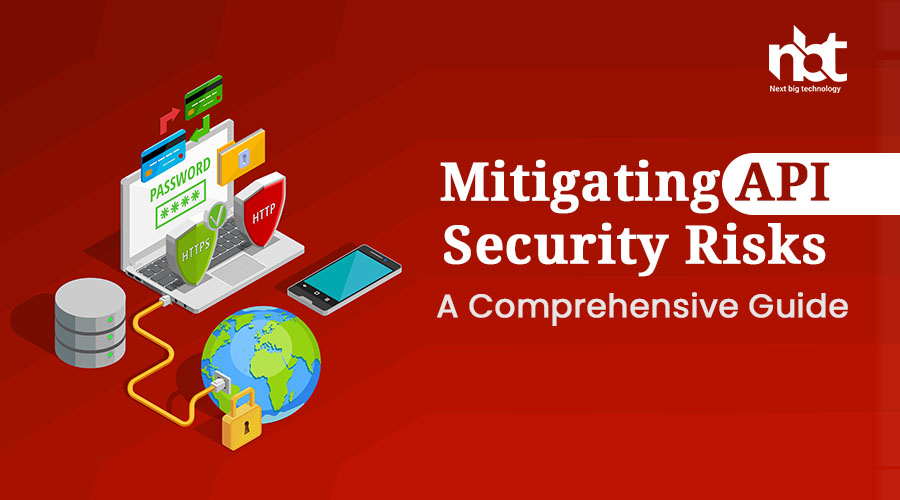Introduction: Application Programming Interfaces (APIs) play a crucial role in modern software development, enabling seamless integration and communication between different systems and applications. However, APIs also introduce security risks that need to be effectively addressed to protect sensitive data and prevent unauthorized access. In this blog, we will explore various API security risks and provide a comprehensive guide on mitigating these risks to ensure the integrity, confidentiality, and availability of your API endpoints.
- Understand Common API Security Risks: To effectively mitigate API security risks, it’s essential to understand the most common threats. Some common API security risks include:a. Unauthorized Access: Attackers may attempt to access sensitive data or perform unauthorized actions by exploiting vulnerabilities in the authentication or authorization mechanisms.b. Injection Attacks: Malicious actors can inject malicious code or payloads into API requests to execute unauthorized commands or gain unauthorized access to data.
c. Denial of Service (DoS) Attacks: Attackers may overload the API with excessive requests or resource-intensive operations, causing service disruptions or degradation.
d. Data Exposure: Sensitive data may be exposed through inadequate data protection mechanisms, such as insufficient encryption or improper handling of personally identifiable information (PII).
e. Man-in-the-Middle (MitM) Attacks: Attackers can intercept and manipulate data exchanged between the API client and server, compromising the integrity and confidentiality of the communication.
f. Insecure Direct Object References (IDOR): Poorly implemented object references may allow attackers to access and manipulate unauthorized data by tampering with request parameters or identifiers.
g. Lack of Rate Limiting: Absence of rate limiting mechanisms can enable attackers to perform brute-force attacks or overwhelm the API with excessive requests.
- Implement Strong Authentication and Authorization Mechanisms: To mitigate unauthorized access risks, implement robust authentication and authorization mechanisms:a. Use Secure Authentication Protocols: Implement secure authentication protocols like OAuth 2.0 or JSON Web Tokens (JWT) to ensure secure user authentication and prevent unauthorized access.b. Enforce Strong Password Policies: Implement password complexity requirements and encourage users to choose strong passwords. Consider using multi-factor authentication for enhanced security.
c. Implement Role-Based Access Control (RBAC): Enforce granular access controls based on user roles and permissions. Regularly review and update access privileges to minimize the risk of unauthorized access.
d. Implement API Key Management: If your API allows access via API keys, securely manage and rotate these keys regularly to prevent unauthorized use.
- Validate and Sanitize User Input: To mitigate injection attacks and protect against malicious code or payloads:a. Input Validation: Implement input validation techniques to ensure that user-supplied data conforms to expected formats and ranges. Validate and sanitize user input to prevent common attacks such as SQL injection or cross-site scripting (XSS).b. Use Parameterized Queries: Utilize parameterized queries or prepared statements when interacting with databases to prevent SQL injection attacks.
c. Implement Content-Type Validation: Verify that requests have the expected content type to prevent attacks like XML or JSON external entity (XXE) attacks.
- Protect Against Denial of Service (DoS) Attacks: To protect your API from DoS attacks and ensure service availability:a. Implement Rate Limiting: Set limits on the number of requests per time interval for each client to prevent abuse and mitigate the impact of DoS attacks.b. Implement Traffic Monitoring and Filtering: Monitor incoming traffic patterns and implement filters to detect and mitigate suspicious or malicious traffic.
c. Employ Load Balancing and Scalability: Distribute traffic across multiple servers and implement scalability measures to handle increased load and mitigate the impact of DoS attacks.
- Secure Data in Transit and at Rest: To protect sensitive data from unauthorized access or interception:a. Use Secure Communication Protocols: Implement secure communication protocols such as HTTPS/TLS to encrypt data transmitted between the API client and server.b. Encrypt Stored Data: Utilize encryption algorithms to protect sensitive data stored in databases or caches, ensuring that data remains encrypted even if accessed by unauthorized parties.
c. Implement Secure Session Management: Ensure secure management of session tokens or cookies to prevent session hijacking attacks.
- Implement API Security Testing: Regular security testing of your API can help identify vulnerabilities and ensure the effectiveness of your security measures:a. Conduct Regular Penetration Testing: Perform penetration testing to simulate real-world attacks and identify vulnerabilities that could be exploited.b. Use Static and Dynamic Code Analysis: Employ automated tools for static code analysis to identify potential security vulnerabilities in the codebase. Use dynamic analysis tools to simulate real-time API interactions and detect security flaws.
c. Implement Vulnerability Scanning: Regularly scan your API infrastructure, including servers, firewalls, and network components, to identify and address any known vulnerabilities.
- Keep APIs Up to Date and Patched: Regularly update and patch your API and its dependencies:a. Stay Informed: Stay up to date with the latest security advisories and patches for the frameworks, libraries, and dependencies used in your API.b. Apply Security Patches Promptly: Keep your API infrastructure and software components updated with the latest security patches to address known vulnerabilities.
- Educate API Users and Developers: Promote security awareness among API users and developers:a. Provide Comprehensive API Documentation: Clearly document security best practices, authentication mechanisms, and guidelines for secure API usage.b. Conduct Security Awareness Training: Educate API users and developers about common security risks and best practices for secure API integration and usage.
Conclusion: Mitigating API security risks requires a proactive and multi-layered approach. By understanding common API security risks and implementing robust security measures, including strong authentication and authorization, input validation, protection against DoS attacks, encryption of data in transit and at rest, and regular security testing, you can ensure the integrity, confidentiality, and availability of your APIs. Stay vigilant, keep your API infrastructure up to date, and regularly educate API users and developers on security best practices. By adopting a security-focused mindset, you can mitigate API security risks effectively and protect your sensitive data and systems from potential threats.










